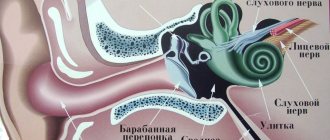Leptospirosis is an infectious disease caused by special bacteria called Leptospira. Most often, the disease can be acquired by swimming in a small body of water contaminated with leptospira or by eating raw water, meat or milk from animals with leptospirosis. There are several types of this disease, some of which can be very life-threatening.
Leptospirosis affects the liver, kidneys, and brain, leads to severe intoxication, and can cause blood clotting disorders and bleeding. Who is the source of infection, how to recognize and how to treat leptospirosis? You will find answers to all these questions in this article.
So, leptospirosis is caused by the microorganisms of the same name, Leptospira. Leptospira are spiral-shaped bacteria that like moist environments. These microorganisms die under the influence of sunlight, disinfectants and high temperature (for example, at 55°C - after half an hour, at 100°C - instantly). Among Leptospira there are pathogenic varieties, that is, potentially dangerous to humans, and saprophytic (neutral, not causing disease). There are about 200 known pathogenic varieties of Leptospira! Due to such a number of pathogens, leptospirosis is a disease with heterogeneous symptoms. The most studied and common types of leptospirosis are infectious jaundice, Japanese 7-day fever, water fever, and canine fever.
Causes of the disease
Leptospirosis has many names. This is the “7-day fever”, and “cane fever”, and “Fort Bragg fever”. Historically known as black jaundice, it is called Nanukai fever in Japan.
The disease is caused by bacteria Leptospira. Based on their general structure, 21 species of this microbe have been identified. 13 of them can cause illness in humans, and some are completely harmless.
The 13 species of leptospira that are pathogenic to humans are also divided according to the structure of their shell, or more precisely, according to the antigens that they exhibit on their surface. Depending on the set and combination of these antigens, as many as 250 species of bacteria are isolated. Accordingly, if a person has suffered a disease caused by one of the Leptospira, this will not protect him from 249 other bacteria.
For reference, let us explain about the mentioned antigens. Every cell present in the body and entering it from the outside must present itself to the immune system (they don’t “know how” to do it any other way). To do this, it exposes special molecules on the surface - antigens, somewhat reminiscent of antennas. An immune cell approaches, connects its special section to these “antennas,” scans the cell, and if it is “on the list,” then the immune system is not activated for protection, and the immune cell moves on. Lymphocytes have to “learn” their cells even during the prenatal period, and mistakes in this matter can result in severe autoimmune diseases, when the body “bombs” some of its tissue, and the treatment consists of suppressing this immunity (and thereby removing protection against infections and cancer).
How is leptospirosis transmitted to humans? The bacterium is spread by both wild and domestic animals:
- cats;
- dogs (in them, leptospirosis is called Stuttgart disease, and it can be seen in the animal);
- cattle;
- sheep;
- pigs;
- horses;
- wild boars;
- martens;
- deer;
- foxes;
- beavers;
- skunks;
- hedgehogs;
- raccoons;
- possums.
The main sources of infection are rodents: mice and rats. It is not always clear from an animal whether it is sick or not.
The disease is not transmitted from person to person.
In order for Leptospira to enter the human body, a person must come into contact with skin that has microcracks (this is mainly the skin of the hands), the mucous membrane of the mouth or nose, or directly with the urine of an infected animal, or with water/soil containing the urine of an infected animal. animal. You can also become infected if urine or soil/water particles containing it get into a person’s eyes. A food route of infection is also possible: by drinking raw water from natural reservoirs, eating raw or undercooked meat, or unboiled milk.
Natural foci of leptospirosis exist mainly in swampy areas and where there are many surface fresh water bodies: reservoirs, lakes, rivers, canal systems. Natural phenomena such as cyclones, rainstorms and floods that occur during the warm season expand the distribution area of the pathogen and improve its survival in the environment. Scientists associate the current increase in incidence with global warming. In addition, the incidence of leptospirosis is directly related to the amount of precipitation. Therefore, in temperate climates this disease is seasonal, and in tropical climates it is year-round.
Other factors causing the spread of infection in temperate climates are socio-economic phenomena:
- intensive migration of people: they can carry Leptospira acquired in tropical regions (where there are ideal conditions for infection with it) to new habitats;
- deterioration in the economic status of individuals and families (they become poor or homeless, causing their hygiene levels to suffer);
- the appearance of deserted areas of settlements that become havens for rodents;
- settlement of uninhabited, most often wooded, areas.
It has now been found that dogs and cats can be the source of infection, although previously these animals were considered insensitive to Leptospira. You can also become infected from farm animals, therefore, despite the improvement of the protective equipment that people use during agricultural work, the risk of becoming infected during such activities increases.
More than 50 years ago, scientist Burgdorfer experimentally demonstrated the possibility of transmission of Leptospira by argasid and ixodid ticks. A little later, 2 Russian researchers - Krepkogorskaya and Rementsova - identified 35 species of Dermacentor margatus ticks, which, parasitizing cattle, carry Leptospira.
It must be said that in many countries (especially in the subtropical geographical zone) both diagnostic and educational work is poorly carried out. As a result, people do not notice their painful symptoms, and treatment, accordingly, begins late, often already at the stage of liver and kidney failure.
What is known about the causative agent of the disease
Leptospirosis is caused by Leptospira interrogans. It is a gram-negative, aerobic, motile, spiral-shaped rod resembling a spirochete. Currently, more than 230 leptospira serovars have been identified. The bacteria are moderately resistant in the environment; pathogenic Leptospira die when exposed to sunlight and high temperatures. In water, different strains can exist from several hours to a month. In dry soil, the viability of Leptospira lasts 2 hours, in waterlogged soil - up to 10 months. They can tolerate freezing and can survive winter in moist soil and water bodies. Leptospira survives on food products for 1-2 days. They die within 20 minutes when exposed to one percent hydrochloric acid and a half percent phenol solution.
The main reservoir of leptospirosis in nature are rodents (mice, rats, gray voles) and insectivorous mammals (hedgehogs, shrews). The reservoir and source of infection are also farm animals (pigs, sheep, cows, goats, horses), fur-bearing animals on fur farms, and dogs. The animal is contagious throughout the entire period of the disease. Rodents suffer from chronic leptospirosis, excreting the pathogen in their urine. Transmission of leptospirosis from humans is extremely unlikely.
Leptospirosis is spread through the fecal-oral mechanism, primarily through water. In addition, we can note the likelihood of transmission by contact and food (feed) routes. A person becomes infected with leptospirosis through mucous membranes or microtraumas of the skin. Infection can occur when swimming in ponds contaminated with bacteria (and swallowing water), or working with farm animals.
Humans have a high natural susceptibility to this infection. After suffering from leptospirosis, immunity is stable and long-lasting, but specific to a given serovar of bacteria and re-infection with leptospira with a different antigenic structure is possible.
Risk categories for leptospirosis
The following people are more likely to get sick:
- farmers;
- veterinarians (especially those working in rural areas who have to come into contact with born and stillborn farm animals and parts of their placenta);
- butchers;
- milkmaid;
- shepherds;
- slaughterhouse workers;
- those who work in sewer systems;
- workers of pigsties, cowsheds;
- foresters;
- hunters;
- soldiers;
- workers of fish farms and fish storage facilities;
- port workers;
- triathletes;
- speleologists;
- rock climbers;
- racers;
- kayaking and rafting.
Forecast
If there are no complications or manifestations of jaundice, then the prognosis is favorable.
Death can occur due to liver or kidney failure , meningoencephalitis or lung problems, insufficient or delayed medical care and a weakened state of the body.
Today, the mortality rate from the disease does not exceed 1-2%.
An increase in this indicator to 15-20% can only occur during a period of mass disease.
How does the disease manifest itself?
It takes 2 to 30 days after the Leptospira bacterium comes into contact with the skin or mucous membranes before the first symptoms of leptospirosis appear in humans. On average, the incubation period lasts 1-2 weeks, therefore, if you suspect you have this disease, you need to remember:
- did you catch fish or crayfish in a fresh reservoir during this period (you are more likely to get sick if you walk along the bottom of the reservoir barefoot, with bare feet, and do your fishing with your bare hands);
- could you clean the basement or cellar without gloves;
- did you go hunting?
- have you moved to a private house?
- have you bought a new animal (including a pet rat);
- could you drink water directly from a reservoir, without boiling;
- Have you eaten a rare steak or half-raw meat?
If even one question makes you think or answer “yes,” contact an infectious disease doctor as soon as possible. As we have already said, the disease is very dangerous and is accompanied by a fairly high mortality rate.
Leptospirosis usually manifests itself in one of 2 forms:
- jaundice, which is characterized by severe liver damage;
- anicteric, which has a more favorable prognosis.
The disease usually occurs in 2 phases:
First phase
The first phase of the disease is considered to be the period from the appearance of the first symptoms to 7 days - while the leptospires that have entered the blood are carried through the bloodstream.
The manifestations of this phase are nonspecific (that is, it is difficult to make a specific diagnosis based on them) symptoms:
- temperature increase – up to 38-39°C, accompanied by chills. It lasts 4-9 days, then decreases. The second “wave” of temperature increase (between 6 and 12 days) usually indicates that the meninges have become infected - meningitis has developed;
- headache;
- muscle pain, especially in the calf and abdominal muscles;
- from 3-4 days conjunctivitis develops (the eyes become redder, a scant mucous discharge appears from them);
- insomnia;
- lack of appetite;
- weakness;
- A red rash, very reminiscent of measles, may appear on the body and limbs for 2-4 days. It can last only a few hours, but most often it lasts for several days;
- a sign of a severe course is the appearance from 1-2 days of illness on the skin not of a measles-like rash, but of hemorrhages that do not fade when pressed with glass or stretched the skin under them;
- rashes similar to herpes, but with bloody contents, may appear on the lips.
After 5-7 days, symptoms may disappear spontaneously, and then never return (even without treatment). In some cases, the disease begins to manifest itself with minor symptoms: slight yellowing of the skin and sclera (or even the absence of this sign), darker color of urine, which also becomes less.
Second phase
Most often, after 1-3 days, during which a person feels healthy, the second phase of the disease begins, during which Leptospira spreads to the internal organs.
In this phase, leptospirosis can be classified as either an icteric or anicteric form.
Jaundice form
- from 3-6 days there is a slight yellowing of the sclera, which gradually increases;
- There may also be blood in the urine;
- sudden “menstruation” in women (in fact, this is uterine bleeding caused by damage to the liver, which is responsible for blood clotting);
- from 4-5 days, kidney damage may develop, which is manifested by a decrease in the amount of urine. 1-2 days after this, urination usually stops completely;
- heart function is disrupted. In those people whose heart was healthy at the time of infection, most often the pulse simply increases, and there may be rare extraordinary contractions (extrasystoles). Elderly people, people with heart disease, smokers and “professional” drinkers may experience serious rhythm disturbances, and their danger is that a person does not always feel them;
- signs of meningitis may appear: headache, nausea, inability to tilt the head to the chest;
- With this form of the disease, various forms of lung damage can develop. Subjectively, they cannot be distinguished: all are characterized by coughing, increased breathing, and in severe cases, a feeling of lack of air.
Anicteric form
The anicteric form is more common (in approximately 90% of cases). It develops after a short and not very pronounced first phase of the disease. It is characterized by symptoms of meningitis:
- repeated rise in temperature;
- new headache;
- inability to tilt the head so that the chin reaches the sternum.
If they develop:
- depression of consciousness;
- convulsions;
- facial asymmetry;
- swallowing disorder;
- slurred speech;
- difficulty moving the limbs,
we can talk about encephalitis. It is rare in leptospirosis.
Some patients may develop uveitis (inflammation of the choroid, which can lead to blindness), which is detected several weeks or even years after the onset of the disease.
In the anicteric form of leptospirosis, a decrease in the amount of urine (up to the disappearance of urine), bleeding gums, uterine and gastrointestinal bleeding may also be observed. A person may also feel discomfort and heaviness in the right hypochondrium, which indicates an enlarged liver.
Symptoms of the disease can range from a combination of minor symptoms (eg, headaches, muscle pain, fever) to severe symptoms (eg, severe bleeding or meningoencephalitis).
If the disease is accompanied by a combination of renal and liver failure, complicated by bleeding (external or internal), it is called Weil's disease and is most likely caused by a leptospira such as Leptospira icterohemorrhagica.
Recovery in mild to moderate cases of the disease, if help is provided on time, occurs within 3-4 weeks. In every 3-5 people who have been ill, leptospirosis can recur, and even several times over the next year.
Symptoms
The incubation period or the first phase (the period of time from the moment of introduction of the pathogen to the first clinical manifestations) lasts from 7-20 days, but on average - 10. At this time, leptospira, getting on the mucous membrane (of any area) or on the skin containing microdamages, begins multiply and spread through the blood (hematogenous spread) reaching various organs, but most often affecting the liver/kidneys/central nervous system/vascular endothelium. As soon as the concentration of the pathogen reaches a certain level, the next period occurs - clinical manifestations.
The period of clinical manifestations lasts up to 4 weeks, and this period includes generalization, peak and residual effects. The disease begins acutely, with general intoxication manifestations - chills and a rise in temperature to high numbers (lasting 4-5 days), myalgia (especially in the calf muscles due to focal necrotic and necrobiotic changes) and lasts about 7-10 days. After this, the second phase begins - the height, which lasted about 2 weeks, which occurs as a result of secondary bacteremia, and then secondary damage to internal organs and is characterized by toxinemia (third phase) due to the gradual death of leptospira and the release of endotoxin with their death with the subsequent development of ITS (infectious toxic shock) and multiple organ failure, systemic damage to the vascular endothelium also occurs in parallel, hemorrhages (bruising) occur on the skin, mucous membranes and internal organs.
Jaundice also develops, both due to hemolysis and destructive changes, resulting in liver failure. Due to vascular lesions in the kidneys, renal failure develops. After damage to the liver and kidneys, comatose states quickly develop, because they cease to perform one of their load-bearing functions - detoxification (excretion of toxic metabolic products). On objective examination, there is a “hood symptom”, which is represented by redness and puffiness of the face, redness of the skin of the neck and upper chest. Injection and icterus (yellowness) of the scleral vessels are noted, without signs of conjunctivitis.
As Leptospira spreads throughout the body, they spread through the blood-brain barrier, reaching the central nervous system, serous or purulent meningitis or meningoencephalitis occurs - meningeal symptoms become positive (stiff neck, Kering and Brudzinski symptoms)
The above listed symptoms (hemorrhages, renal and liver failure, ITS) are only collective images that hide the following:
1) Hemorrhages - hemorrhages on the skin, mucous membranes and, in severe cases, in internal organs. The rash has some features:
- on the skin, these rashes resemble a type of measles/rubella/scarlatina-like rash;
- localization on the chest, abdomen and arms;
- during decompensation, nasal, abdominal (intraorgan) bleeding occurs, and hemorrhages occur at the injection site
- the rash may disappear after a few hours, leaving behind peeling and/or pigmentation
2) Renal failure - characterized first by a decrease (oliguria), and then by the absence of urination (anuria), as well as positive liver symptoms, uremia and disturbances in the concentration of electrolytes in the blood develop, which contributes to toxicity.
3) Liver failure - will be manifested by jaundice and itching of the skin, icterus of the sclera, possible pain in the right iliac region. But jaundice also occurs due to the direct action of hemolysin (a pathogenicity enzyme) - it destroys red blood cells, releasing bilirubin.
4) ITS develops as a result of the direct action of Leptospira exotoxin, and under the influence of endotoxin released during their death. Violation of the detoxification functions of the liver and kidneys leads to disruption of the elimination of toxic metabolic products. Also, the decay products of necrotic tissues formed as a result of destructive changes make their contribution to ITS.
Complications and prognosis of the disease
The consequences of leptospirosis are always very serious. This:
- acute renal failure, which can be fatal;
- chronic kidney damage, which lasts many months and even years;
- acute liver failure;
- meningitis;
- infectious myocarditis (inflammation of the heart muscle);
- prerenal azotemia;
- acute respiratory distress syndrome (pulmonary edema not due to heart disease), caused mainly by blood soaking the lung tissue;
- interstitial pneumonitis;
- decompensation of chronic heart failure;
- thrombosis of the veins of the cranial cavity;
- encephalitis;
- necrotizing pancreatitis;
- uveitis;
- hearing loss.
Mild forms of leptospirosis are rarely fatal. But in those patients whose disease was severe (this is 5-10% of all patients with leptospirosis), the mortality rate can reach 5-40%.
The possibility of chronic infection, that is, the existence of Leptospira in tissues, is refuted by foreign scientists: there is very little objective evidence confirming or refuting this hypothesis.
Leptospirosis in pregnant women can lead to fetal malformations, but most often to their death. But there is a chance (its numbers are difficult to name) that with timely administration of antibiotics, the child will be born alive and healthy.
Medical therapy
Treatment of leptospirosis consists of etiotropic, pathogenetic and symptomatic therapy (prescribing antibiotics, preventing complications and alleviating the condition, respectively). Antibiotic therapy can be carried out with the prescription of penicillin (in the absence of an allergic reaction), drugs of the tetracycline group, gamma globulin contained in hyperimmune ox serum.
Leptospirosis in a person in mild form can be treated on an outpatient basis without the need for hospitalization. As a rule, a 5-6-day course of antibiotics (tetracycline or penicillin) is given. If adverse reactions such as vomiting, nausea or diarrhea develop, erythromycin may be used. If the patient complains of muscle pain, headaches, or fever, ibuprofen or paracetamol may be additionally prescribed. To avoid relapse of the disease, the course of treatment should not be interrupted.
Treatment of severe forms must be carried out in a hospital under the supervision of doctors. Antibiotics are administered intravenously, supplemented by IV drips containing nutrients that support the patient. The need for pathogenetic therapy arises with the development of renal failure, cerebral edema, acute cardiovascular failure or DIC syndrome. To alleviate the patient's condition, hemodialysis and infusion therapy are carried out with the introduction of appropriate drugs (diuretics for impaired renal function, ascorbic acid and cardiac glycosides for cardiac dysfunction, brain metabolites for cerebral edema, detoxification drugs and protease inhibitors in the case of disseminated intravascular coagulation syndrome).
The duration of treatment depends on the condition of the body, the degree of damage to internal organs and the response to therapy.
Rehabilitation period
After successful treatment of leptospirosis, patients should be registered with a dispensary for a period of about six months. During this period, rehabilitation measures are carried out, consisting of consultations with an ophthalmologist, neurologist, therapist or pediatrician (if the patient is a child). After six months, the patient must appear every month for an appointment with a therapist, who, if necessary, will prescribe an examination with a specialized specialist. During the first two months of rehabilitation, clinical and laboratory examinations are carried out regularly.
If at the end of the rehabilitation period the test for leptospirosis does not give positive results, the patient is removed from the register. Otherwise, observation with appropriate rehabilitation measures lasts for 2 years.
Diagnosis of leptospirosis
Diagnosis in humans consists of:
- blood culture on Terskikh medium or Ellinghausen-McCullough-Johnson-Harris (EMJH) medium;
- determination of antibodies to Leptospira in blood serum. This analysis is performed at least 3 times: with leptospirosis, the antibody titer should increase (that is, initially antibodies were found only in serum diluted 125 times (then they write “titer 1:125”), and then, by the height of the disease, the patient’s body had already produced there are many antibodies, and they are already detected in serum diluted 1125 times (they write “titer 1:1125”. An antibody titer of type 1:25 or 1:50 with a very weak increase casts doubt on the diagnosis of leptospirosis;
- isolation of bacterial DNA from blood, cerebrospinal fluid and urine using the PCR diagnostic method.
At the same time, other tests are also taken to exclude diseases with symptoms similar to leptospirosis. These are hepatitis, sepsis, rickettsiosis, brucellosis, malaria, hantavirus infections.
For this disease, be sure to do the following:
- urine tests, glomerular filtration rate, determination of potassium, urea and creatinine in the blood - to determine kidney function;
- determination of bilirubin, ALT, AST, coagulogram, proteinogram - to determine the functioning of the liver;
- feces for occult blood - for early diagnosis of bleeding;
- general blood test - to determine the level of inflammation and platelet count;
- chest x-ray;
- ECG;
- Ultrasound of the abdominal organs, especially the kidneys, liver and spleen.
Preventive measures
Effective prevention of leptospirosis is possible only if the following conditions are met:
- Timely vaccination, testing and treatment of pets. Vaccination against leptospirosis helps protect not only your pets, but also your family members from such an insidious disease.
- Avoid visiting fresh water bodies if there are abrasions or cuts on the skin.
- Hygienic shower after swimming in rivers and lakes.
- High-quality hygiene of farm workers, the use of gloves and protective masks when in contact with animals.
- Regular hand washing, especially after playing with pets and returning from the street, eating only washed fruits, vegetables and herbs.
Important nuances
Unlike animals, a person infected with leptospirosis does not pose a danger to others, since he is a biological dead end in the chain of spread of the disease.
Treated leptospirosis in humans does not guarantee lifelong immunity due to the type specificity of the disease. If the body is infected with another Leptospira serovar, infection can occur again.
As you can see, leptospirosis is easier to prevent than to treat. The main thing is to be attentive to your own body and contact specialists at the first suspicion. Only professional diagnosis, timely treatment and a responsible approach become the key to a successful recovery without the development of life-threatening complications.
Treatment
When leptospirosis is suspected, a person must be treated in an infectious diseases hospital, due to the need to monitor the functioning of his vital organs. Home therapy is not provided. Moreover, at the slightest suspicion of renal failure (decreased urine output, increased creatinine, potassium, decreased glomerular filtration), the patient is transferred to the intensive care unit of an infectious diseases hospital. Patients with liver failure, decompensated heart failure, and lung damage are also placed here.
If the kidney indicators are in critical condition (checked by the level of potassium, a high concentration of which - above 6 mmol/l - creates a serious threat to the heart), the patient is transferred to the artificial kidney department.
2 weeks of treatment: strict bed rest. This is due to the need to create gentle conditions for both the heart (myocarditis may develop) and the liver (blood flow in this organ depends on the position of the body; in a sitting position it decreases by more than 3 times).
Diet – table No. 7, used in the treatment of kidney diseases, plus restriction (or complete abolition) of potassium-containing products. If sodium levels are high, all dishes and tea are made without salt, only with distilled water.
To destroy the Leptospira bacterium itself, antibiotics, usually penicillin, are used. This is Benzylpenicillin or Ceftriaxone. The antibiotics Doxycycline and Erythromycin are also used abroad. To help the human immune system, a specific anti-leptospirosis immunoglobulin is prescribed.
In addition, the following is performed:
- infusion therapy - to the extent that the kidneys allow. With a decrease in glomerular filtration, the volumes of intravenous fluid administered are greatly limited and can only consist of those drugs that cannot be administered without them;
- suppression of gastric juice secretion - with the drugs Omeprazole, Contraloc, Rabeprazole, Nolpaza;
- if the platelet count is extremely low, platelet mass is transfused;
- prevention or treatment of bleeding - through the administration of drugs "Gordox", "Kontrikal", transfusion of blood plasma of the same group that the patient has;
- in case of renal failure - diuretics and hormonal drugs are administered, the patient can undergo several sessions of hemodialysis;
- in case of lung damage, oxygen therapy is carried out, including with the help of an artificial ventilation device;
- if the heart is damaged, antiarrhythmic drugs and beta blockers are administered.
Prevention
To prevent outbreaks of leptospirosis, the following preventive measures are used:
- combating leptospirosis among farm animals;
- sanitary protection of reservoirs and water intakes;
- organization of bathing places;
- extermination of rats (deratization);
- the use of personal protective equipment for livestock workers - overalls, rubber boots and gloves, aprons;
- immunoprophylaxis with killed leptospirosis vaccine for people at risk;
- emergency prevention of leptospirosis in the outbreak using antibiotics (Doxycycline).
Leptospirosis is not only an occupational disease of livestock and veterinary workers. You should remember the danger of contracting an infection when swimming in an unknown body of water, drinking raw water and thermally unprocessed foods. Timely seeking help at the first symptoms of the disease significantly reduces the risk of complications and adverse outcomes.
Liver diseases: symptoms and first signs Hepatitis C: first signs and treatment regimen Liver cirrhosis Why is the liver enlarged - what to do and how to treat? Liver hemangioma - what is it? Treatment and symptoms Fatty liver hepatosis: symptoms and treatment











